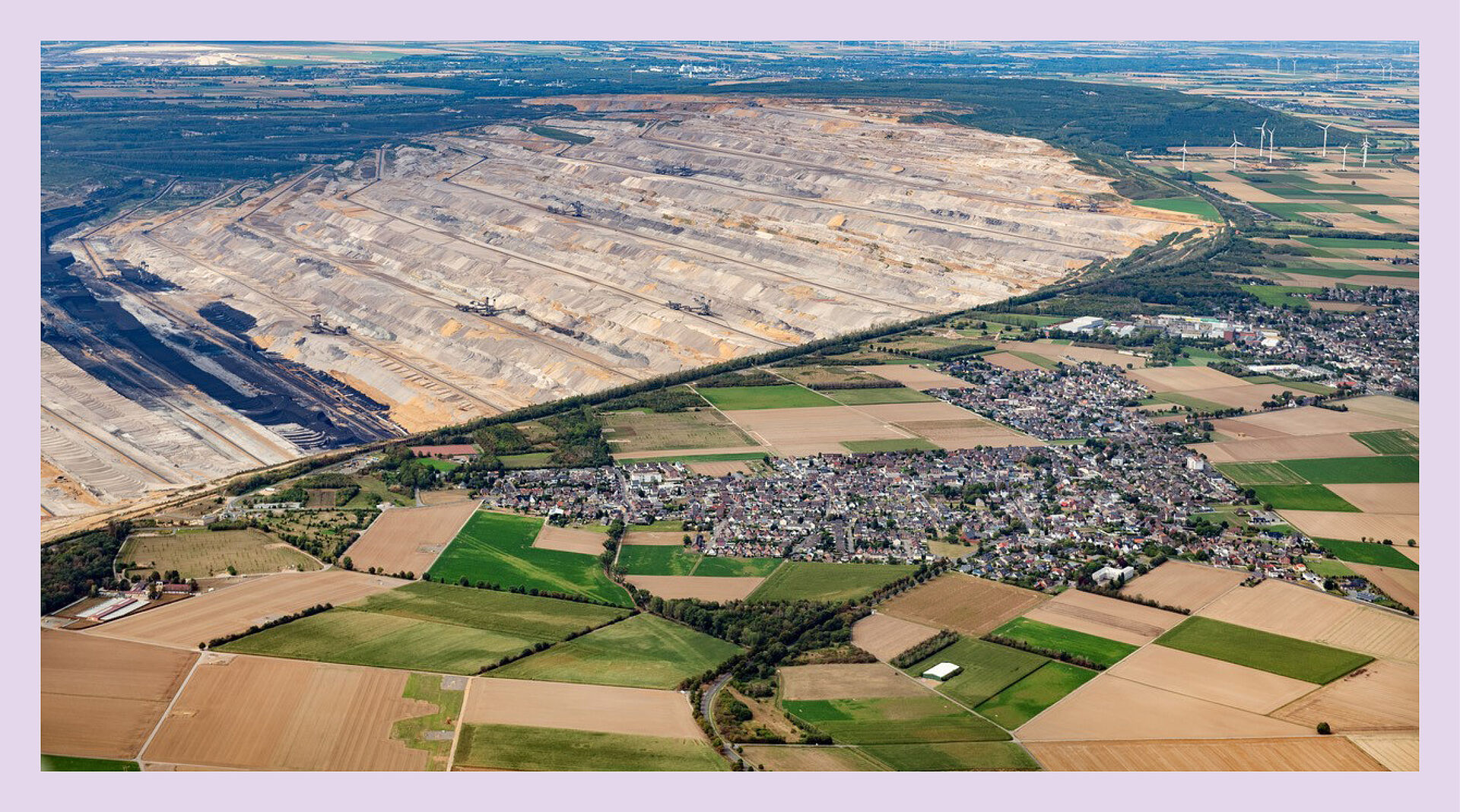
Eisenhüttenstadt. Detroit. Silicon Valley? The founding of new towns, especially in the context of the coal and steel industry, has a long tradition. Beyond the function of housing for workers and their families, they were linked to certain ideologies and a firm belief in the future. Today, in the 21st century, what do new city foundations look like in the context of new forms of value creation, such as manufacturing or sustainable energy production? How will future industries influence emerging forms of settlement? In the course of your master thesis you will develop a spatial vision for a settlement in the Rhenish Revier for about 25,000 - 40,000 people. The Rhenish mining area as an industrial and scientific region is facing a fundamental transformation process with the coal phase-out decided in 2020 and against the background of climate change and energy transition.
Open-cast lignite mines and power plants have shaped the area to a particular extent over the last century. How do you position yourself in relation to the bizarre open pit topography - gigantic holes up to 400 meters deep cutting into the landscape? Are you building on the edge in anticipation of the future waterfront and its resulting qualities, or do you develop historically grown and in some cases erased structures of existing places? Urban Village, Low Rise, High Density Settlement, Floating Village on the Lake - the task is to identify potentials of a future sustainable development, to describe future scenarios and to design prototypical places between water, city and landscape that can meet the demands of present and future generations.
Format
hybrid
Einführung
Tu, 05,04,2022, 9.30-11:30 Uhr
Dates
Submissions
23.08.2022 (plans)
30.08.2022 (models)
19.-23.09.2022 (final presentation)
Excursion
to Rheinisches Revier from 25.04. to 29.04.2022 (5 days)
Place
ISU
Language
german/english
Prof. Dr. Vanessa Carlow
Prof. Dr. Martin Prominski (Leibniz Universität Hannover)
Chantal Karadag,
Olaf Mumm
and ISU team